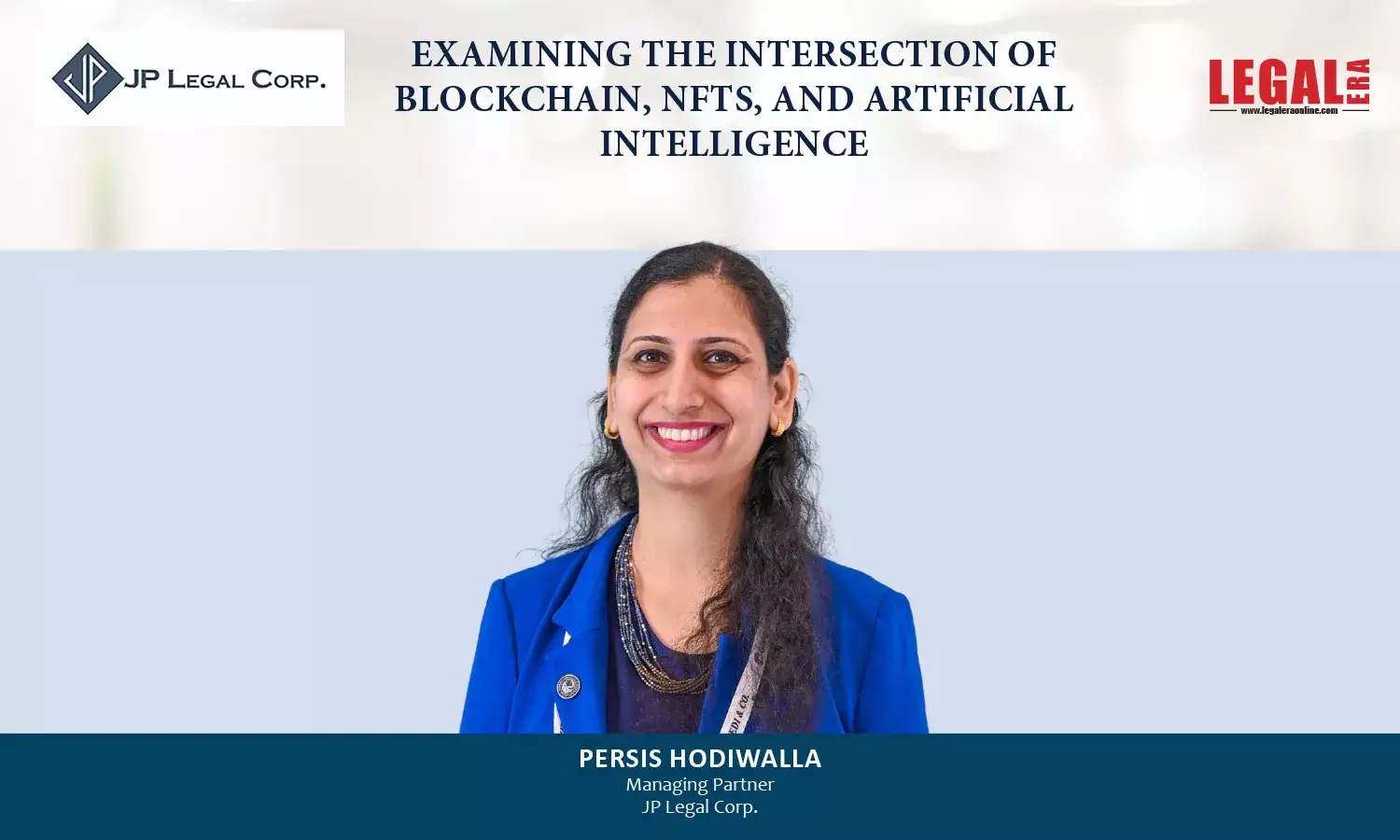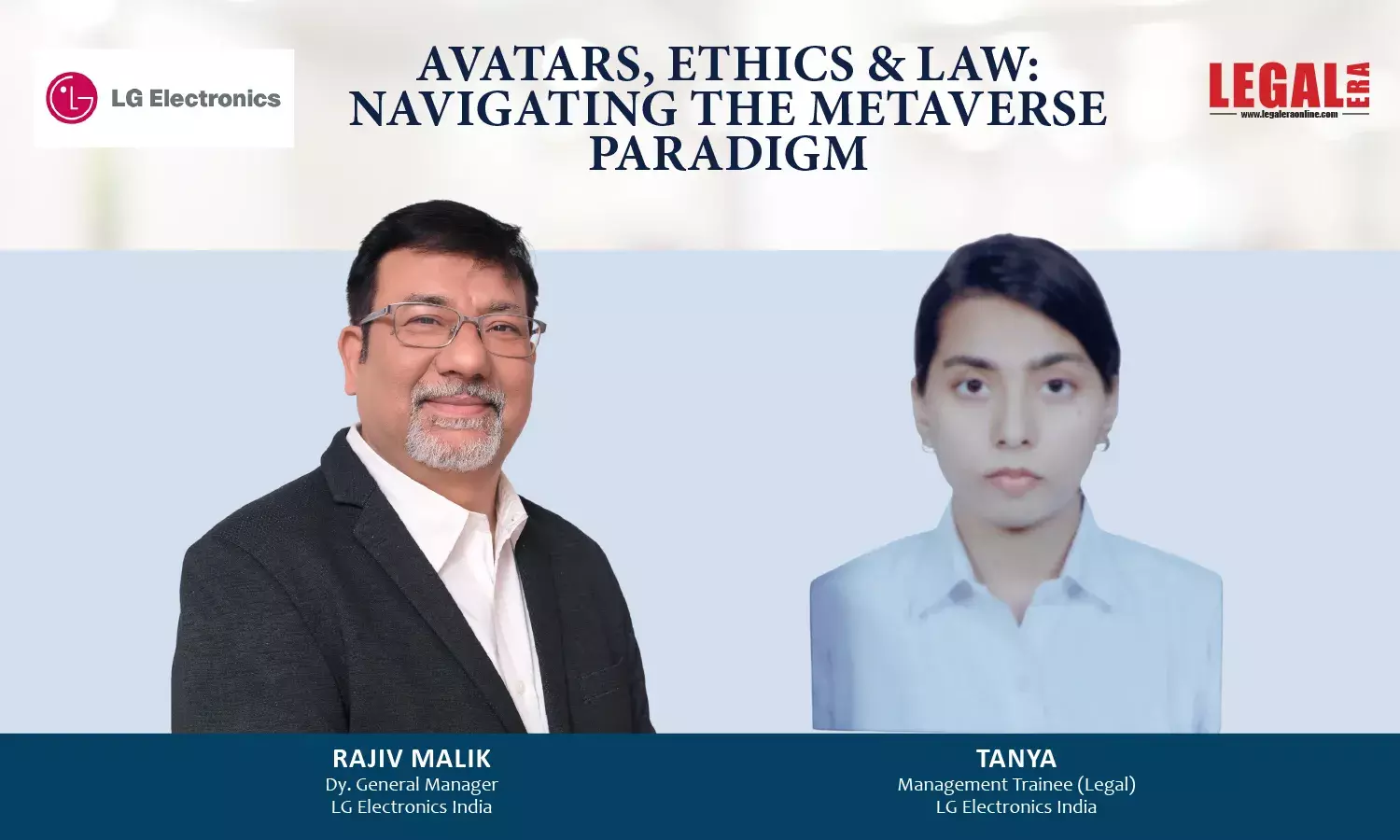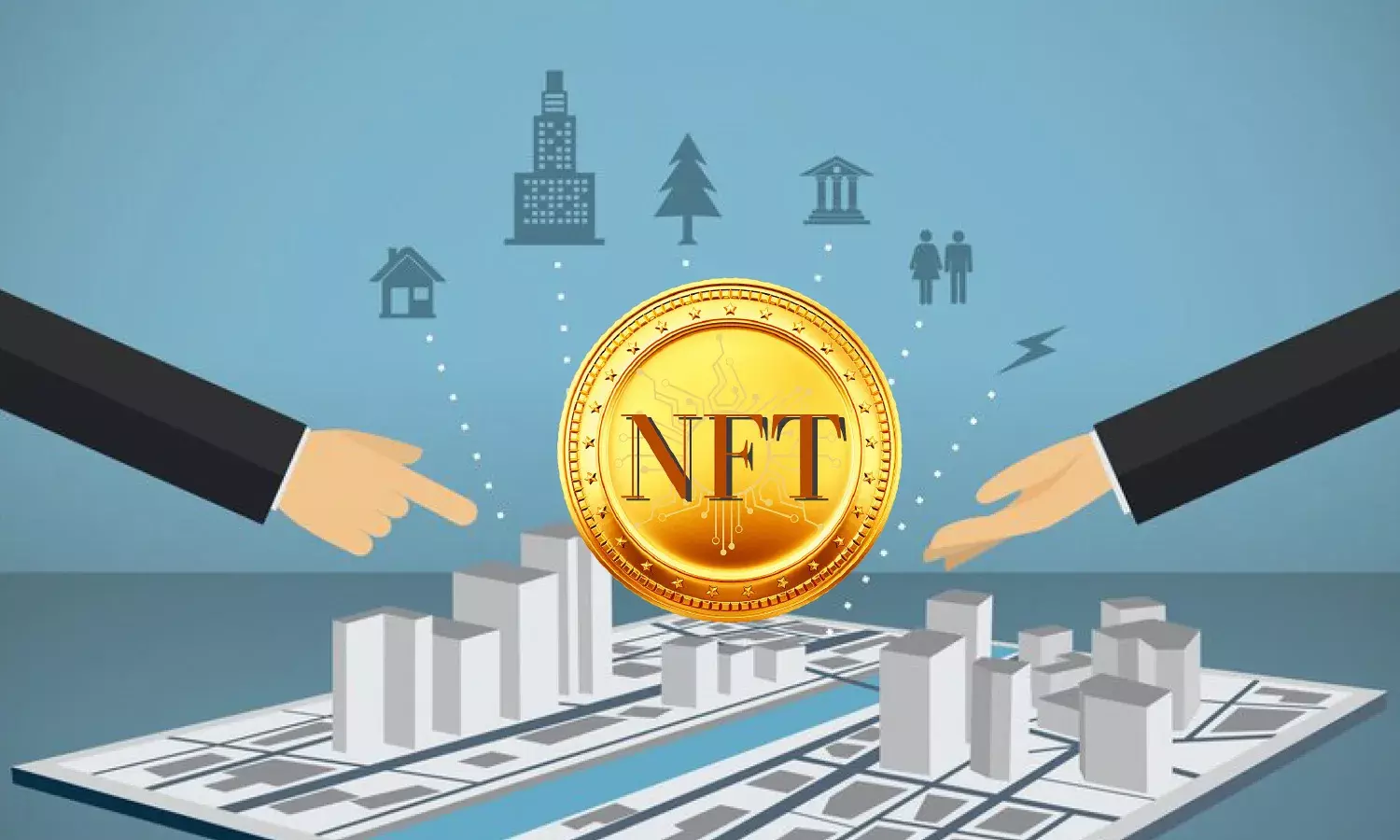Examining The Intersection Of Blockchain, NFTs, And Artificial Intelligence

Examining The Intersection Of Blockchain, NFTs, And Artificial Intelligence The intersection of blockchain technology, NFTs, and artificial intelligence opens up a world of possibilities for innovation and disruption in a number of industries. Three major technologies-Blockchain, Non-Fungible Tokens (NFTs), and Artificial Intelligence (AI)-have emerged as leaders in transforming...
Examining The Intersection Of Blockchain, NFTs, And Artificial Intelligence
The intersection of blockchain technology, NFTs, and artificial intelligence opens up a world of possibilities for innovation and disruption in a number of industries.
Three major technologies-Blockchain, Non-Fungible Tokens (NFTs), and Artificial Intelligence (AI)-have emerged as leaders in transforming established paradigms and altering industries in the rapidly evolving field of technical developments. While each of these inventions offers unique capabilities and prospects, when combined, they open up previously unheard opportunities in a number of industries. This Article explores how Blockchain, AI, and NFTs are interacting and what that means for the future of digital assets, the creative industries, finance, and other areas.
Comprehending Artificial Intelligence (AI)
Fundamentally, artificial intelligence is the computer systems’ ability to simulate human intelligence processes. Artificial intelligence (AI) algorithms provide machines the ability to learn from data, adapt to new inputs, and carry out activities like speech recognition, visual perception, language translation, and decision-making that normally need human intelligence. Artificial Intelligence (AI) has grown in sophistication due to developments in machine learning, deep learning, neural networks, and natural language processing. These advances have fueled innovations in a wide range of industries, including healthcare, finance, retail, manufacturing, and entertainment.
Non-Fungible Tokens (NFTs): A New Definition of Digital Ownership
Using blockchain technology, Non-Fungible Tokens are a special kind of digital asset that validates the ownership and legitimacy of tangible or digital goods. In contrast to fungible and interchangeable cryptocurrencies like Bitcoin and Ethereum, each NFT has unique properties that make them impossible to duplicate. The use of NFTs in digital art, collectibles, gaming assets, virtual real estate, and intellectual property rights has drawn a lot of attention. Tokenization and verifiable ownership have made it easier for investors, artists, and producers to monetize and transact in the digital space, opening up new opportunities.
Blockchain Technology: The Basis for Openness and Credibility
The fundamental technology behind cryptocurrencies and decentralized applications (DApps) is blockchain. It functions as a distributed ledger, securely, transparently, and irrevocably recording transactions via a network of computers. Blockchain guarantees integrity, confidentiality, and decentralization by using consensus methods and cryptographic algorithms. This removes the need for middlemen and permits peer-to-peer transactions. Beyond financial uses, blockchain is useful for identity verification, supply chain management, voting, and smart contracts. It transforms conventional corporate procedures and promotes confidence in online interactions.
AI, NFTs, and Blockchain Convergence: Innovations and Synergies
The intersection of blockchain technology, NFTs, and artificial intelligence opens up a world of possibilities for innovation and disruption in a number of industries:
AI-Powered NFT markets: By enabling content curation, personalized suggestions, and predictive analytics, AI algorithms can improve NFT markets. AI-driven systems can improve user experiences and expedite the search for and acquisition of NFTs by examining user preferences, browsing history, and market trends.
Dynamic NFT Creation: With the help of AI algorithms, artists and designers can create dynamic and one-of-a-kind NFTs through generative art, procedural content production, and algorithmic design. AI can produce digital artworks, musical compositions, and virtual goods using methods like deep learning and generative adversarial networks (GANs), enhancing the variety and inventiveness of the NFT ecosystem.
AI-Driven Asset Valuation: By evaluating the worth, scarcity, and market demand of NFTs, predictive analytics and AI-driven analytics can help collectors and investors make wise choices. In the rapidly expanding NFT sector, artificial intelligence (AI) algorithms can spot investment possibilities, reduce risk, and enhance portfolio management techniques by examining sentiment research, social media trends, and historical sales data.
Blockchain-Based AI Marketplaces: Through tokenization and smart contracts, blockchain platforms enable decentralized AI marketplaces where developers can earn money from AI models, datasets, and algorithms. AI marketplaces facilitate peer-to-peer transactions, encourage collaboration, and guarantee equitable pay for intellectual property rights by utilizing blockchain’s transparency and security capabilities.
AI-Driven Content Authenticity: By using AI algorithms to authenticate and validate digital content, plagiarism, copyright infringement, and counterfeit goods can be lessened. Artificial intelligence-powered solutions are able to identify original producers, detect modifications, and establish provenance inside the NFT ecosystem by using techniques like digital fingerprinting, watermarking, and content analysis.
AI-Enhanced Gaming and Virtual Worlds: By enabling intelligent NPCs (Non-Player Characters), dynamic storytelling, and adaptive gameplay, AI technologies improve immersive experiences in gaming and virtual worlds. Conversational agents, procedural generation techniques, and AI-driven avatars enhance the interactivity, responsiveness, and engagement of virtual environments for both content developers and players.
Obstacles and Things to Think About
Despite the revolutionary potential of blockchain, NFTs, and AI, there are a few issues and factors to take into account:
Scalability and Energy Consumption: Due to the high energy consumption of consensus techniques like Proof of Work (PoW), blockchain networks are susceptible to scalability issues and environmental problems. For widespread acceptance and long-term sustainability, efforts must be made to increase scalability and switch to more sustainable consensus methods.
Legal Frameworks and Regulatory Compliance: The legal and regulatory environment pertaining to NFTs, Cryptocurrencies, and Decentralized Finance (DeFi) is changing quickly, and legislators are finding it difficult to set definitive rules and regulations. For stakeholders and market participants, regulatory compliance, tax ramifications, and intellectual property rights provide major obstacles.
Tokenization and verifiable ownership have made it easier for investors, artists, and producers to monetize and transact in the digital space, opening up new opportunities.
Data Privacy and Security: Because AI-driven apps use enormous volumes of data, there are worries regarding algorithmic bias, security lapses, and data privacy. Building trust and encouraging responsible AI adoption requires securing sensitive data, getting user consent, and reducing biases in AI models.
Interoperability and Standardization: For smooth asset transfers and interoperable experiences, there must be interoperability across various blockchain networks and NFT marketplaces. To fully utilize the blockchain ecosystem, standards for interoperability, cross-chain protocols, and decentralized bridges must be established.
In conclusion, a new era of decentralized ownership, digital innovation, and creative expression is heralded by the merging of Artificial Intelligence, NFTs, and Blockchain technology.
These technologies have the ability to transform how we view value and ownership in the digital age, democratize access to digital assets, and empower artists and communities as they develop and intersect. Stakeholders can embrace the revolutionary power of AI, NFTs, and blockchain to construct a more inclusive, transparent, and intelligent future for future generations by solving technical hurdles, legislative complications, and ethical considerations.
Disclaimer – The views expressed in this article are the personal views of the authors and are purely informative in nature.





